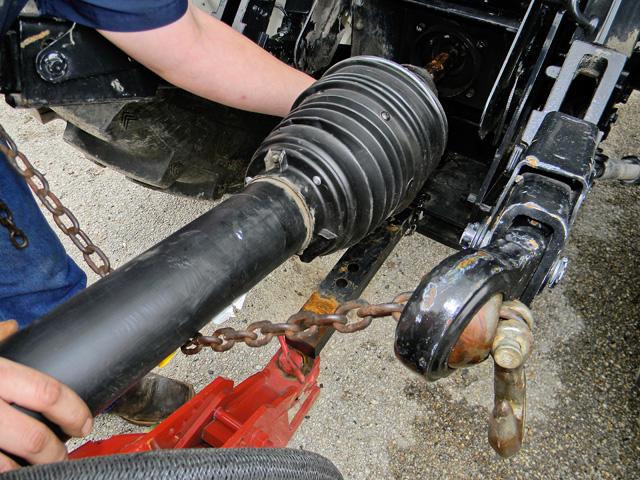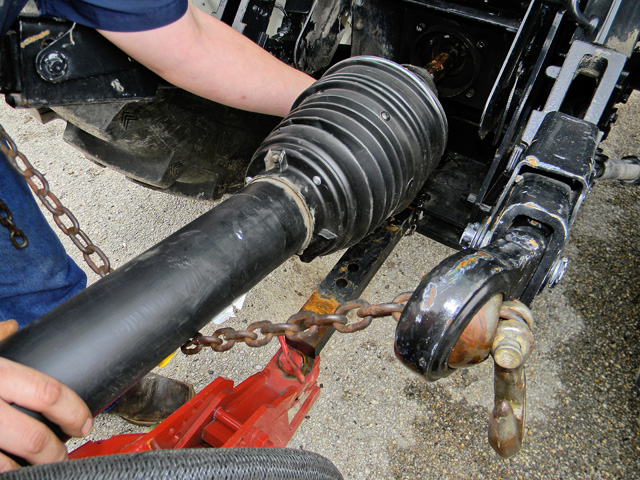MachineryLink
Ask The Mechanic: Simple Tool to Install Bulky Water Pumps
DTN/The Progressive Farmer's Ask The Mechanic Columnist Steve Thompson answers readers' mechanical questions. You can read Steve's columns every month in The Progressive Farmer's digital edition (click on the "Resources" tab to find the magazine and inside, Steve's Ask the Mechanic columns).
If you have any questions for him, you can contact Steve at: Steve Thompson at Ask the Mechanic, 2204 Lakeshore Dr., Suite 415, Birmingham, AL 35209, or email: mechanic@progressivefarmer.com.
Here are Steve's answers to questions submitted by readers:
READER: I have a 3930 Ford-New Holland tractor. I have had to replace the fuel solenoid twice and am now having issues with it again. Is there something going on with the tractor that could be causing this issue, or is it possible I have just gotten a couple of bad solenoids?
STEVE: Yes sir, that solenoid can give its share of trouble. But, just to make sure the problem is with the solenoid, let's do a couple of checks. First, run a wire from the plus side of the battery (or from the top connection on the starter solenoid where the positive battery cable attaches), and place it on the spade fitting on the bottom of the solenoid.
P[L1] D[0x0] M[300x250] OOP[F] ADUNIT[] T[]
The tractor should start if the solenoid is good, since this wire eliminates all voltage drop in the ignition switch and factory wire to the solenoid. Sometimes, just checking for available voltage at the load does not assure that the needed available amps (what does the work) are there to open the solenoid.
If the tractor will not run, instead of purchasing another solenoid, you can set the kill on the pump "old school" with a push-and-pull cable like those on the older brothers of your 3930. Simply plug the bottom of the pump where the inoperable solenoid fits and buy a kill setup. Please, don't use baler wire like my neighbor did.
The manual kill lever is still on the 3930 injector pump, located on the top and front of the pump. Moving the spring-loaded lever to the rear kills the tractor. Moving it to the front allows the tractor to run. Sometimes, older tractors have more dependable ideas than the newer tractors. Like wine, some older tractor ideas get better with time.
**
READER: I'm trying to put a water pump on my 641 Ford tractor. It is very difficult to get the heavy, long-nosed water pump in place without messing up the gasket. With the shroud in place and the exhaust pipe in the way, I can't seem to hold it up in place to get the bolts started. I have messed up two water pump gaskets, and I can't get my wife interested in helping me hold it in place to get the bolts started. Do you have any ideas for me? Is there a special tool for holding the water pump in place? I have had similar problems with water pumps on other machines with tight areas to work. I really don't want to take off the hood and radiator to get this job done.
STEVE: I know what you are talking about here. My fingers have felt your pain from being scratched by the radiator fins. As far as a special tool to help you, there is a simple tool that is already in your shop. This tool is cap screws that are 5/16 by 2 1/2 or 3 inches long and with course thread. Cut off the heads of the cap screws and round off the end where you cut it off under the head. Now, just screw the "pilot" cap screws in the water pump threaded holes. Next, slip the water pump with silicone holding the gasket on the pump side and another thin amount of silicone on the outer side of the gasket. The silicone on the outside will fill any rust pits on the mating surface. Finally, remove the pilot bolts one at a time, replacing them with the original water pump cap screws and torque screws in a cross pattern.
**
SAFETY ON THE FARM
Black and blue fingernails are an all-too-common result of hooking up a drive shaft to the PTO shaft. Much of today's power-driven equipment has a constant velocity (CV) joint that hooks to the PTO. The older spider/yoke assembly was much lighter and easier to handle, because it does not move in so many directions that you can usually get your fingers out of the way before being crushed.
However, the CV joint has much more motion and can be very, very heavy, and it will smash your fingers in a heartbeat. If your tractor is equipped with a three-point hitch, one way to help avoid injury is to tie a small chain through the balls in the drag/lift links on the tractor (see photo). With the chain through the balls on the drag links and placed under the implement's driveline, the driveline can be raised and stopped with the tractor's three-point hitch at the level of the PTO shaft. That makes the chore of stabbing the driveline on the PTO shaft much easier and safer.
(c) Copyright 2021 DTN, LLC. All rights reserved.





Comments
To comment, please Log In or Join our Community .